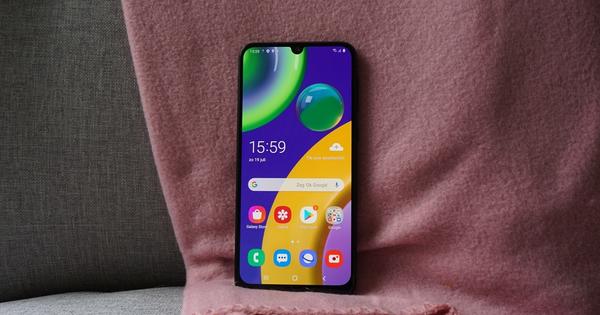You may have heard it singing around a bit, but we are on the eve of the rollout of the 5G network. After 3G and 4G, we understand that it is about a better and faster network, but what does it mean exactly? More importantly, how will the roll-out of 5G benefit you and should you prepare for it? We explain it to you.
What is 5G?
In short, 5G stands for the fifth generation of mobile networks; logically this is the successor of 4G. When we look at the jump from 3G to 4G, the progress was mainly related to speed. This will also be the case with the transition from 4G to 5G, but the speed increases so exponentially that completely different possibilities arise, about which more later in this article. 5G uses three different spectrum bands (low, medium, and high) and offers lower latency in addition to high download and upload speeds. That is, devices can communicate with each other faster. All this also explains why the roll-out of 5G is taking so long: many adjustments are needed and in some countries, including the Netherlands, certain frequencies intended for 5G are already in use by other protocols. Slowly but surely, these problems are being solved worldwide, and 5G will make its long-awaited debut.

How fast is 5G?
We already mentioned a significantly higher speed than with 4G. When we were all still active on the 3G network, we could surf and email at a speed of up to 2 Mbps. The maximum speed of 4G should be 1 Gbps, although the actual speeds (in the Netherlands) are somewhere between 50 and 100 Mbps. The maximum download speed via 5G should be 10 Gbps. Now it is not expected that we will actually achieve these speeds, but it is clear that 5G is a huge leap forward. That makes things possible that we can't even imagine possible right now, which you'll read more about in a moment. But first a bit of explanation about another advantage of 5G.
 The lower latency of 5G is even more important than the speed
The lower latency of 5G is even more important than the speed latency
The literal translation of latency is latency, which in this case refers to the time it takes two devices to contact each other before they can communicate. Compare it with an ordinary modem from about twenty years ago. When you were connected, you could download at a certain speed. But before the download could begin, the modem had to connect to the Internet. Even if the file you were supposed to download could be downloaded within two seconds (which was usually unrealistic at the time), making the connection could take you over a minute in total. The latency of a technology like 5G is not quite the same, but the principle is: data can only be exchanged when devices talk to each other. The latency at 2G was 0.5 seconds, with 3G it was already a lot better with 0.1 seconds. 4G brought 0.05 second, and 5G does it another five times faster and connects in 0.01 second to be precise. A waiting time of 0.05 seconds is of course not very long. So why does the jump to 0.01 make such a difference?

Vehicles
One of the reasons that 5G is so eagerly anticipated is because we are on the eve of self-driving cars. To make this technology safe, it is important that self-driving vehicles can communicate well with each other. The network does not even have to be extremely fast for this: after all, no heavy files are exchanged. However, the latency or latency is crucial in this case. Imagine a self-driving car racing down the highway at a speed of 110 kilometers per hour. The self-driving car that is driving for this suddenly has to hit the brakes fully, because it detects a danger. When cars communicate with each other, this signal can be passed on to the car behind, which then automatically brakes. If this communication were to take place via the 4G network, the car would have traveled two meters in the time it takes for the two cars to communicate with each other. In the case of 5G, this would be just 40 centimeters. You understand, the latency can make the difference between life and death.
healthcare
5G will also revolutionize healthcare. Forwarding a patient record may not sound like something that requires a lot of bandwidth, but files generated by medical equipment, such as an MRI scanner, for example, easily take up a few gigabytes. Imagine having to send hundreds more than those files every day, often at the same time. Then a super-fast connection is absolutely not a luxury. Here, too, latency plays a major role. 5G will make performing remote operations a lot safer, because you can imagine that when a remote operation is performed, the difference between 0.05 and 0.01 second can again mean the difference between life and death. 5G is also essential for Massive Machine-Type Communications, abbreviated MMTC. This is a development in which devices exchange large amounts of data, with as little human intervention as possible, in order to keep an eye on things and solve problems. In a hospital, for example, MMTC could contribute to a gigantic sensor network that monitors all patients, but also compares medical data to arrive at diagnoses or adjust disease course.
The current generation of smartphones cannot handle 5GSmartphones
It's nice to see the revolutionary possibilities 5G has, but let's not forget that it will also ensure that you can use the internet a lot faster on your smartphone. Unfortunately, that does mean that you will have to buy a new smartphone. The current generation of smartphones is not yet suitable for 5G. That does not mean that you will no longer be able to use the device at all, but it does mean that you will not benefit from the high speeds. The good news is that you won't have to buy a dedicated 5G smartphone. It is expected that from 2020 almost all major brands will have equipped their main models with support for 5G. Certain major brands, such as Samsung and Sony, have already announced that they will come with 5G support this year. We actually expect that support from Apple, but that company keeps its mouth shut as always. The higher speed of 5G will mainly provide support for more intense augmented reality (AR) applications on smartphones, simply because much more data can be pumped over the line.

IoT
If you thought the world of Internet of Things, or smart devices, had exploded by now, wait another year or two or three. Once 5G is rolled out, we will see a massive change in the way these devices work. First, and we're sorry, there's a chance you could replace half of your devices. From smart doorbells to smart lighting, if they connect directly to the internet via the mobile network, they will have to be replaced by 5G models. Fortunately, this is not an issue for most devices, because they run via the wireless network. For Philips Hue lamps, for example, you will only have to replace the bridge. Thanks to 5G, the number of smart devices in the home will increase significantly, because communication will no longer be a problem. Again, you can think of an entire sensor network in your house, so that you can always keep an eye on your health, your fitness, your sleep rhythm and so on. We find that both super exciting and terrifying.
When?
So there will be smartphones that support 5G next year. Does this mean we can expect 5G next year? At least not yet in the Netherlands. In a number of Asian countries and the United States, the roll-out of 5G networks is already starting this year, but at the time of writing the frequency auctions have not even been scheduled in our country. That can only happen after politicians make a decision about the available frequencies for 5G. Only when the frequencies have been auctioned can the implementation of 5G be accelerated. The European Commission wants to have a working 5G network in Europe by 2020. The big question is whether this will work as far as the Netherlands is concerned. But whether it is or not, 5G will (hopefully finally) be a reality within three to four years and we can benefit from everything you've read in this article.


